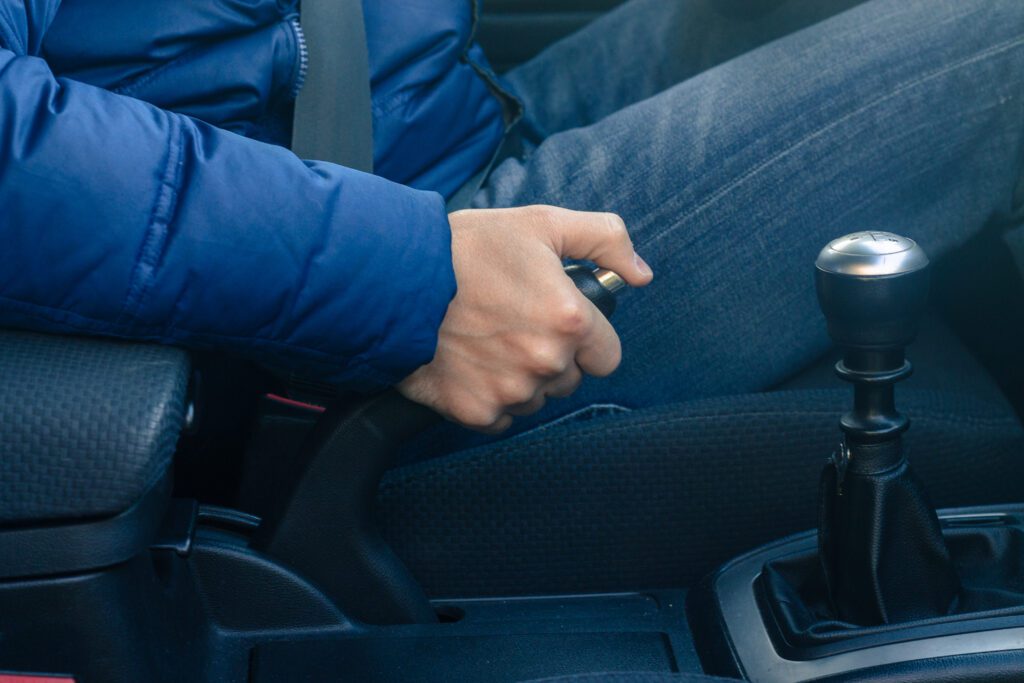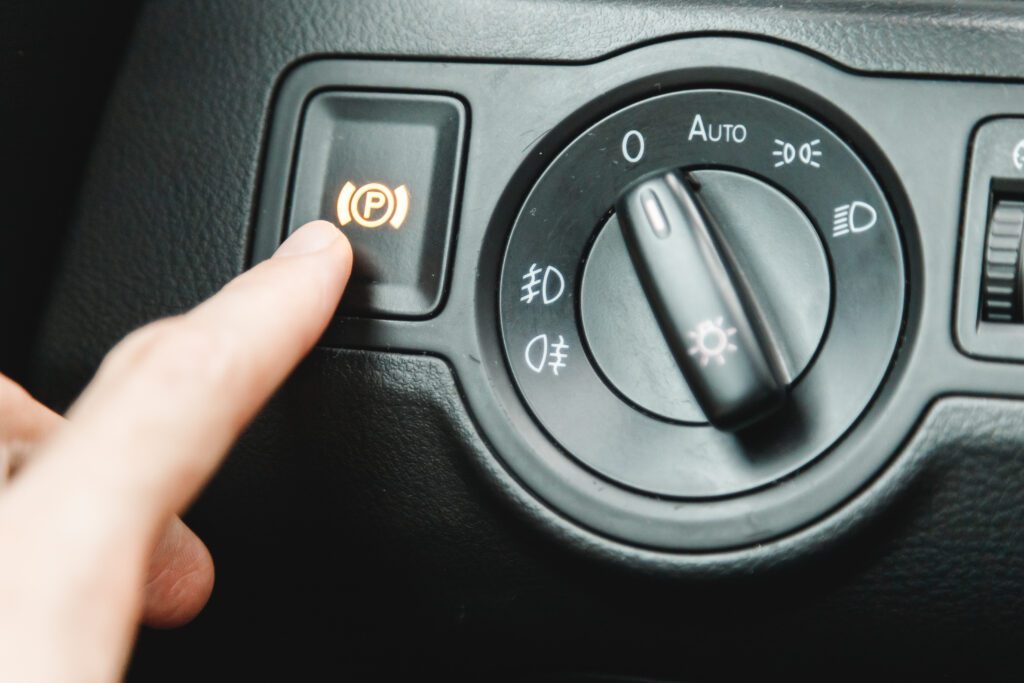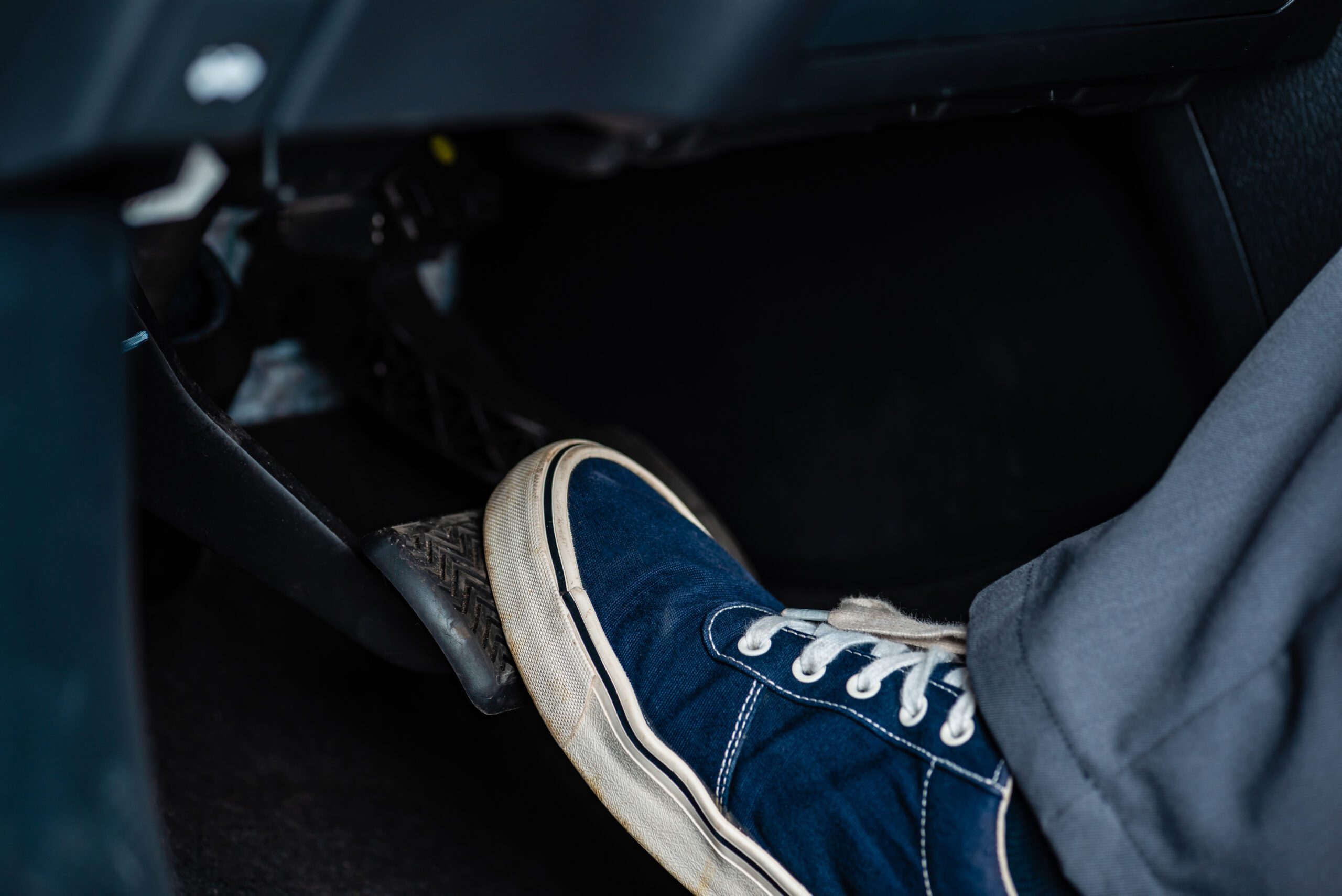About JC Whitney Editorial Team

Meet the JC Whitney Editorial Team, your go-to experts for automotive insights, from in-depth car culture articles to the latest in vehicle tech.
More from JC Whitney Editorial TeamHere’s a pop quiz: do you know what the pedal in your car to the far left of your brakes does? If you don’t have a pedal there, how about the lever just to the right of the driver’s seat? These are common placements for a crucial but sometimes overlooked tool your car has: the parking brake. This seemingly simple component is in fact a multi-faceted device with a history and purpose that extends beyond its name. Many refer to it as the handbrake, emergency brake, or even e-brake, each name shedding light on its varied functionalities.
Origins and Evolution
The origin of the parking brake can be traced back to the earliest days of the automobile and, in fact, even earlier to horse-drawn carriages. The fundamental principle behind the parking brake is simple: provide a mechanical means to hold the vehicle stationary, especially when parked on an incline.

In the context of horse-drawn carriages, these brakes were often simple lever systems that applied pressure to the wheels, preventing them from rolling. As automobiles began to replace carriages, a need for a more robust and reliable braking system emerged. Early automobiles were primarily rear-wheel drive, and the rear wheels were the logical choice for implementing this stationary brake mechanism.
The first parking brakes in automobiles were hand-operated and directly engaged the rear brakes using cables. By pulling up on a lever, the driver could mechanically apply the brake shoes against the brake drum (or later, the brake pads against the brake rotor in disc brake systems). This mechanism worked independently of the car’s primary hydraulic braking system.
Safety was the main reason for developing and implementing this system. The primary hydraulic brake system, especially in early vehicles, could fail due to fluid leaks or other malfunctions. Having a mechanical backup ensured that the driver could still bring the vehicle to a stop. Additionally, the parking brake would ensure the car remained stationary when parked –especially on inclines– reducing the reliance on the transmission to keep the vehicle in place.
Over time, as vehicles evolved and technology improved, so did the design and function of the parking brake. However, the fundamental principle of providing a mechanical means of holding the vehicle stationary remains at its core. Today, while many vehicles still utilize a hand or foot-operated lever, electronic parking brakes, which engage with the push of a button and use electric motors to apply the brake, are becoming more prevalent.
How It Works
Understanding the parking brake requires delving into its core components. Parking brakes serve as a secondary braking system distinct from the vehicle’s main hydraulic brakes. When engaged, they keep the vehicle stationary, preventing any potential movement, especially when parked on hills. Most parking brakes operate through a mechanical system. When the parking brake is activated, usually via a hand lever or foot pedal, a series of cables connected to the brake mechanism are pulled taut. This action causes brake shoes or pads to press against a drum or rotor, creating friction and thus preventing the wheels from turning. In modern vehicles, especially those with electronic parking brakes, the process is managed by electric motors that, when activated, exert force on the brake pads. Regardless of the specific mechanism, the primary goal of the parking brake is to provide a redundant, non-hydraulic means of holding the vehicle stationary.

When to Use It
Parking brakes are essential tools for you to ensure your vehicle remains stationary in various situations. One of the primary scenarios is when parking on an incline or decline, where the parking brake prevents the car from rolling. Even on level ground, it’s a good practice to engage the parking brake to reduce stress on the vehicle’s transmission and prevent potential movement. In manual transmission vehicles, it’s common to use the parking brake every time you park to complement the vehicle being left in gear. Additionally, if you suspect issues or failures with the main braking system, the parking brake can act as an emergency backup to bring the vehicle to a halt. The e-brake can also be used for drifting, but that’s another story. Lastly, in areas prone to natural disasters like earthquakes, using a parking brake can prevent unintended vehicle movement during seismic events.

Why Yours Doesn’t Work
If you’ve ever used your parking brake, there’s a chance you may have also unknowingly started to drive your car while it was still on. Even though most cars have a dashboard warning light designed to prevent just this situation, sometimes we overlook this and begin driving with it on anyway. That begs the question: why can I still move my car with the emergency brake on? Isn’t that the whole point of having it? The ability to accelerate a car even when the parking brake is engaged arises from the inherent differences in the design and strength of the primary braking system compared to the parking brake. The main braking system of a car is robust, designed to decelerate the vehicle from high speeds and bring it to a stop efficiently. On the other hand, the parking brake is primarily crafted to keep the vehicle stationary once it’s already stopped. If the parking brake is not fully applied or is only partially engaged, its holding force might not be substantial enough to counteract the power generated by an accelerating engine. Additionally, some parking brakes only act on the rear wheels, allowing the car’s engine to overcome this resistance, especially in powerful vehicles. Over time, wear and reduced effectiveness of the parking brake components can also play a role in this ability to move despite the brake being engaged.
The Future of Parking Brakes: Electronic and Beyond
As we cruise into an era dominated by electronics, even the humble parking brake isn’t spared from innovation. EPBs, which replace traditional mechanical systems with electronic ones, are becoming increasingly popular. They’re more efficient, space-saving, and can integrate seamlessly with other vehicle systems.

Furthermore, as autonomous driving technologies advance, parking brakes will likely undergo further refinements. Imagine a future where your vehicle, after safely ferrying you to your destination using advanced AI, engages its parking brake, not through a cable or electronic switch, but through a software command processed by its central computer.
Maintenance and Safety
Maintaining your parking brake is essential. Just like any other component of your vehicle, the parking brake can wear down over time. Regular usage, combined with environmental factors, can cause the cables to stretch or corrode and the brake shoes or pads to wear down. If not inspected and adjusted periodically, it might not function effectively when needed. It’s also possible for the mechanism to seize if not used regularly. For safety and optimal performance, it’s advisable to have your parking brake checked during routine vehicle inspections or service appointments. Ensuring its proper operation will not only enhance your safety, but also prolong the life of the brake components.
If your parking brake is no longer working or its efficiency has decreased, there are several signs you might notice. When you engage the parking brake, you may find the lever or pedal moves more freely than usual, indicating the cables might have stretched or there’s a lack of tension in the system. Conversely, if the lever or pedal is hard to move or sticks, it could mean the mechanism is seized or there’s corrosion in the system. When parked on an incline with the parking brake engaged, if your vehicle moves or rolls, that’s a clear indication it’s not holding as it should. Additionally, unusual noises, like clicking or grinding, when engaging or releasing the parking brake can also hint at issues. Lastly, during regular maintenance or inspections, mechanics might identify excessive wear on the parking brake components, suggesting it’s time for repairs or adjustments.
Still have questions? We get it. YouTube is full of helpful videos that demonstrate some of these ideas, including this popular overview from @SpeedKar99.
The parking brake, an often-overlooked component, plays a critical role in both the safety and functionality of a vehicle. From its mechanical origins to its electronic future, it remains a testament to the automotive industry’s drive (pun intended) to evolve while ensuring safety. As vehicles become smarter and more integrated, the parking brake will undoubtedly adapt, showcasing the blend of history and innovation that defines the world of automobiles.


